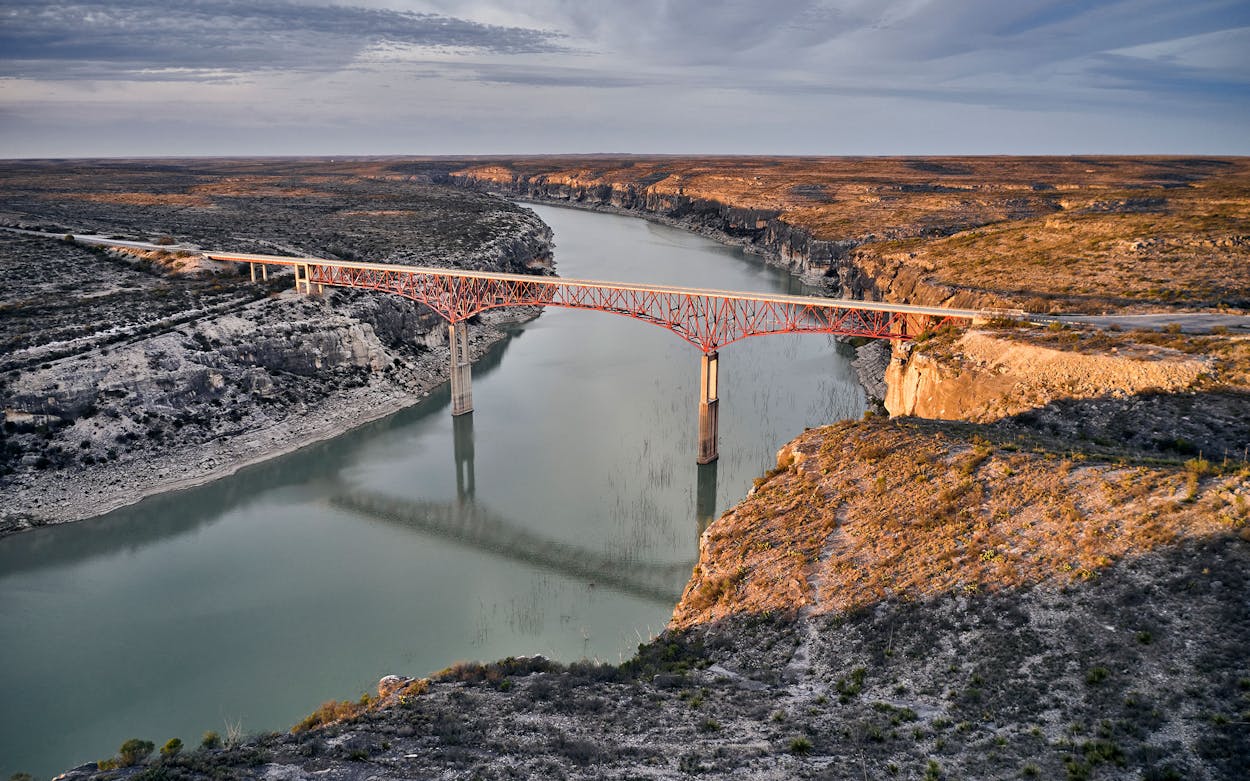The concept of a boomerang paddle trip is simple: You put in and take
out at the same location. No need for a shuttle. On a flowing river,
boomeranging requires working against the flow, and then riding the
current back downstream. Santa Elena Canyon, in West Texas’s Big Bend National Park, offers the most famous out-and-back kayak/canoe trip in Texas by far, but because of the current drought, its extremely low water levels have rendered it unnavigable. Here are three great
alternatives.
East Texas
Armand Bayou
Armand Bayou is a welcome slice of watery wilderness among
Houston’s sprawl. Flanked by the Johnson Space Center, the University
of Houston–Clear Lake, and the petrochemical maze of Pasadena, the
slow-moving bayou is protected by the 2,500-acre Armand Bayou
Nature Preserve, one of the biggest urban wilderness parks in the
country. The amenity-packed preserve charges an entrance fee and
offers guided tours (kayak included). Another option, the more spartan Bay Area Park, is free. From either location, you can paddle upstream to the narrow, freshwater reaches of the bayou or downstream toward the brackish waters of Clear Lake. “It’s always lovely, and it’s so accessible,” says Natalie Wiest, the commodore of the Houston Canoe Club.
Put-in / take-out: Armand Bayou Nature Preserve or Bay Area Park
Level: Easy
Watch out for: Heat, alligators
Central Texas
South Llano River
Fed by generous, largely drought-proof springs, the South Llano River is a slender, gentle gem found near the edge of the Hill Country. Usually
paddled in the traditional way—downriver, with a shuttle arranged to
whisk boats and gear back to the put-in—the South Llano can also be done boomerang-style. Expect to drag your boat up five or so rapids. Your reward: a waterfall about 2.75 miles in and a fun ride downstream back to your car and your cooler. The truly masochistic may want to consider the annual Up & Back Boat Race, which has competitors going 14.5 miles upstream from Junction City Park and then turning around to cover the same distance—all in no more than twelve hours.
Put-in / take-out: The second crossing of U.S. 377
Level: Moderate
Watch out for: Heat, flash floods
West Texas
Pecos River
Nothing on the Pecos River is easy, but if you don’t have time to
paddle the standard sixty-mile trip, the launch at U.S. 90 at least makes
for a semi-convenient way to enjoy one of Texas’s wildest and least-
accessible rivers. At this point on the lower Pecos’s journey, it has
turned from a river with plenty of white water into a lake, an arm of the
vast Lake Amistad. You get to decide how far upriver you paddle. Only
the most adventurous will make it far enough upstream to see rapids.
Enjoy deep canyons, great fishing, and bountiful but unmarked
camping within the Amistad National Recreation Area. If the wind is blowing, consider postponing: paddling into the prevailing
southeasterly wind can range from tiring to nearly impossible.
Put-in / take-out: Boat ramp at U.S. 90 in the Amistad National Recreation Area, near Comstock
Level: Moderate to difficult
Watch out for: Heat, flash floods, soul-crushing winds
An abbreviated version of this article originally appeared in the July 2022 issue of Texas Monthly with the headline “The Same River Twice.” Subscribe today.
- More About:
- Hill Country
- East Texas
- West Texas









